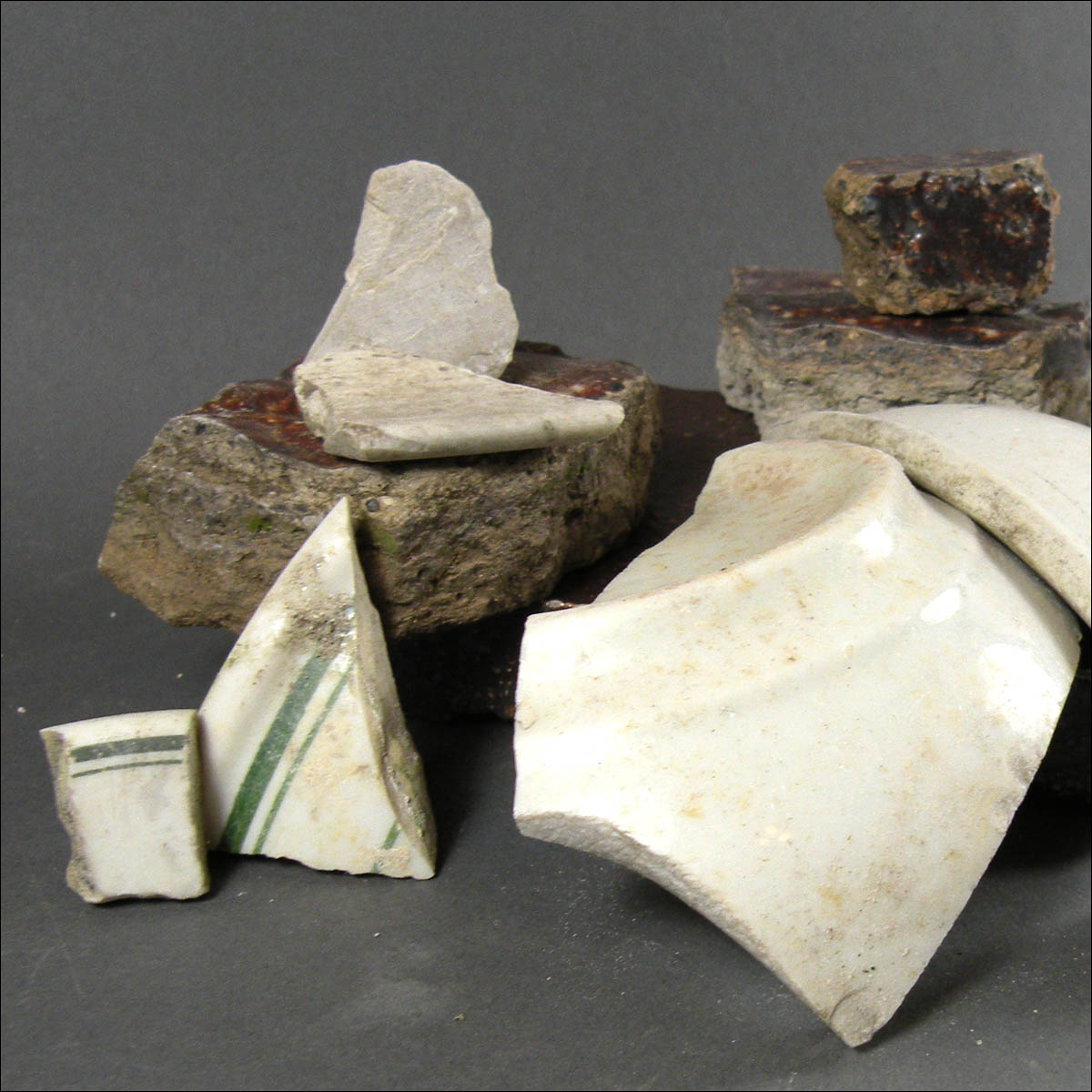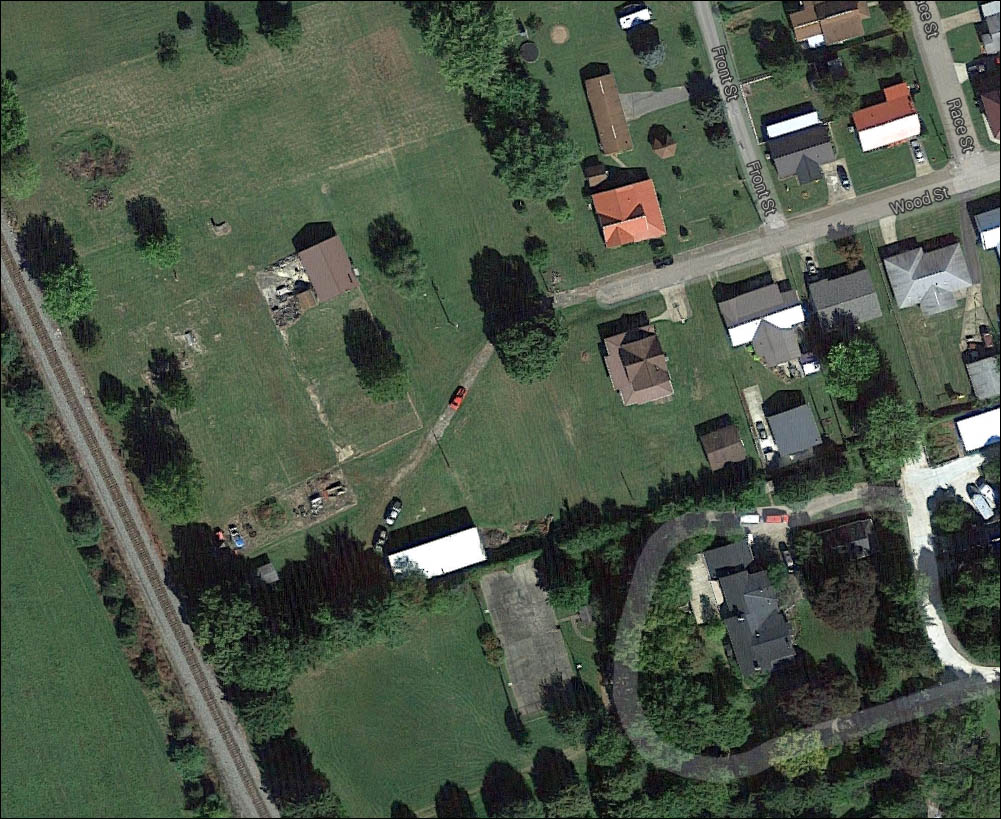Mountain Hopping 2016:
Trenle-Blake

|
 |
 |
| Above left, on the south side of the end of Wood Street, and above right, on the north side of the end of Wood Street. The ruins stretch out from between these two houses (below), toward the railroad tracks and beyond, the Ohio River. |
 |
 |
 |
 |
 |
 |
| This building (above) was identified by Sharon as having been part of the plant, possibly the sales office. Below, finding insulator shards along the railroad tracks below the plant. Across the tracks is the Ohio River. |
 |
 |
 |
 |
 |
| Click here to see the Google street view of the site. Latitude and longitude: 38.960259, -81.77321. |
 |
 |
| And last, our only unusual piece of Trenle-Blake's china was this multi-tasking coffee cup with an indentation in the top of the handle for that all-important after-meal cigarette! Because life is full of happy coincidences, as it turns out we sold this cup to the Reynoldses in 2015 on ebay, and it's now part of their collection. |
First stop was Ravenswood, located along the Ohio River with a population that hovers around 4,000.
Except for our belief that the plant was located at the west end of Wood Street, we had no clue where to find it.
Luckily, we stopped in at Yesterday's Antiques (on 224 Washington Street) and were greeted by Robin Reynolds, who owns the shop with her husband Earl – a consummate collector of Trenle-Blake China. The shop is inviting and filled with West Virginia and Ohio pottery at good prices (meaning that we left with a stack of plates from the shop!).
We had two assumptions about Trenle-Blake that Robin cleared up for us. First, we had always assumed that it was pronounced "Tren-lee." Her understanding was that it was called "Tren-lee" in Ohio, but when the company moved into Ravenswood it was known locally as "Trennel." So "Trennel" it is.
And second, we had thought that Trenle-Blake was limited almost exclusively to white and green-lined wares – that is until Robin pulled up photos of Earl's stash of topmarked pieces. That in itself was worth the trip to Ravenswood.
Robin pointed us toward Wood Street, and we drove down a short street with former mill housing on each side – some shabby and some restored. At the end were two lovely homes and between them – below and beyond – stretched an expanse of mostly open field where we could see some old brick foundations.
This was obviously private property. OK, every stop on the trip was on private property, but we felt like Trenle-Blake was more of an invasion of personal space than any other site. So we knocked on one door at the end of the street and were given permission to take a look.
Next thing we knew, Sharon Trout, who lives in the house on the other side, came out and began answering our questions and invited us to walk the grounds. After picking up a few shards and pieces of kiln furniture, we walked down to the railroad tracks where we found hundreds of pieces of pottery insulators.
Then Sharon invited us into her lovely home, gave us cold drinks and pulled out two pieces of Trenle-Blake china that she and her husband had found in their house when they renovated it. And she showed us a copy of a drawing of the plant from 1921.
And back to the pronunciation of the name: During our visit, Sharon consistently referred to the plant as "Trendel" – with a D-sound thrown in there. She said that's how she always hears it.
Follow up: When we came home we found two pieces of information that provide clues to those insulators.
First, according to this link, when Trenle China Co. was operating in East Liverpool, Ohio, it made "electrical porcelain." Was it possible that Trenle-Blake in West Virginia also made insulators?
In addition, according to this link, we found that prior to housing Trenle-Blake, the Wood Street site had been home to Ravenswood Porcelain Co., which made "porcelain knobs, cleats, etc." and also made "Sackett mine insulators" and "rack spools."
So the insulator shards we found could have been produced by Ravenswood Porcelain and not Trenle-Blake. We did not find any insulator shards on the grounds itself, but instead along the railroad tracks.
Digging in West Virginia, Pennsylvania & Ohio
|
TOP
|

